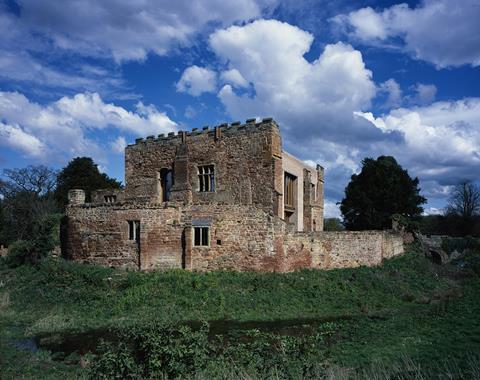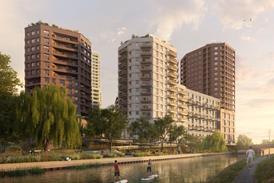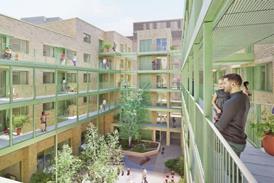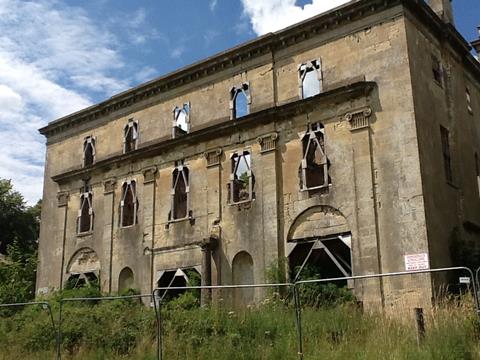Let’s hope we are beyond reviving historic buildings with spurious replica sections, and into an age of unambiguous old and new architectural partnerships, says Gillian Darley
There is a rather impressive ruin on this year’s RIBA Stirling Prize shortlist. The deft insertion of Witherford Watson Mann’s competition-winning house for the Landmark Trust within the shell of Astley Castle in Warwickshire is (I hope) a strong signal that conjectural restoration has been consigned to the scrapheap. The notion that a replica of what was, (or, more likely, might have been) is an appropriate solution to the revival of a building of quality, castle or not, has been given a run for its money.
At Astley, the ruin, as if host to the new house, sets the scene. First impressions are given by an approach through a courtyard surrounded by stabilised masonry walls and remnants of chimneys — a theatrical master stroke that leaves no room for misunderstanding. The old building is presented unambiguously — as is the new.
This came to mind when I went back to John Soane’s early country house, Piercefield House, which stands high above the Wye Valley just outside Chepstow in Monmouthshire.
Designed in the mid-1780s, it bears a marked resemblance to another contemporary Soane house — Shotesham Hall in Norfolk, itself more fortunate, since it survives intact. Piercefield has long been a sorry sight and is now a basket case, the subject of an energetic campaign by Save Britain’s Heritage, encouraged by a proactive local authority conservation officer.

Piercefield stands, with a desultory security fence demarcating it and two equally ruinous pavilions by Joseph Bonomi, in isolation. Inside the stonework of the poignant 1780s fragment can be glimpsed masonry from a much earlier house, a kind of battered Russian doll.
The rest of the estate, including the adjacent stables (also derelict) and the open parkland over which it looks, has now been parcelled off by the Reuben Brothers, offshore owners of Chepstow Racecourse and much else around it.
The beached ruin was placed on the market recently but, when a genuine purchaser stepped forward, the vendor failed to respond — fortunately that individual remains committed to saving Piercefield. If released to a sympathetic owner, and then treated with flair and imagination, Piercefield could be a house as much for the 21st century as for the 18th.
North of the border, real castles are two-a-penny, safeguarded from heavy restoration by the watchful eye of Historic Scotland. Meanwhile, even the tamed Home Counties have their share, such as 14th-century Betchworth Castle in Surrey, now washed up on the edge of a golf course. But, look the other way, and it occupies a picturesque spur above the River Mole.
Bought for £1 a couple of years ago by a local enthusiast, its romantic qualities are best evoked as a stabilised ruin — like the great abbeys of north Yorkshire, which will now be owned by the new independent English Heritage.
But in towns and cities, instant ruins, the fragments of demolished buildings, are all too often the planners’ last stand — a fig leaf against some elephantine development.
No doubt BD readers can provide their own worst examples of paper-thin facades stuck, ludicrously, onto grim new work. This is neither viable conservation nor credible new design — ruined buildings not ruins.


















No comments yet